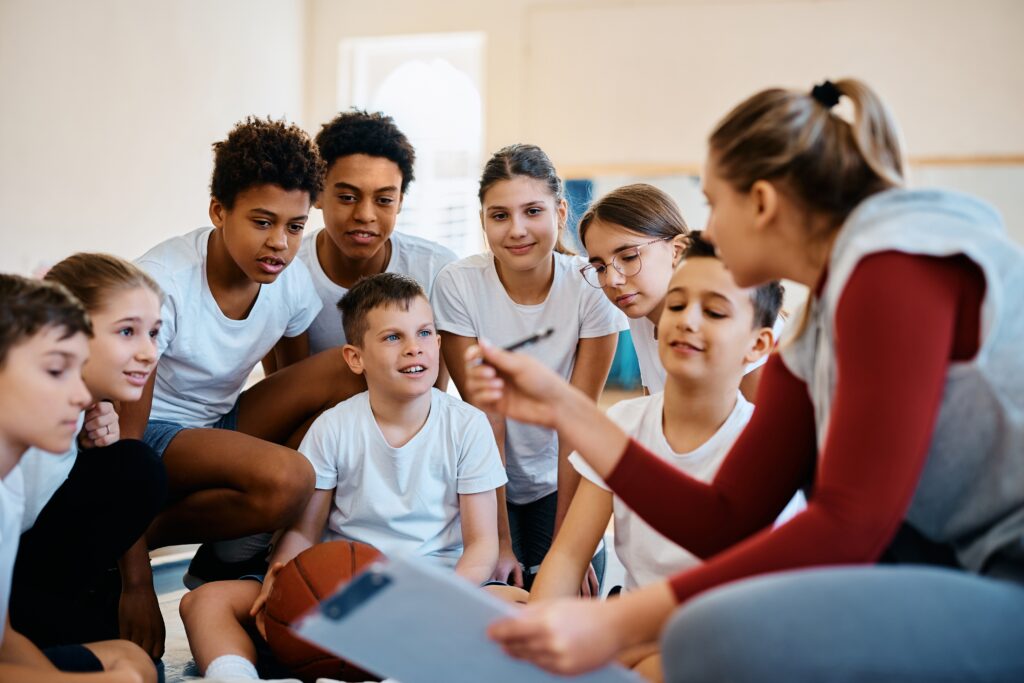Physical Education (PE) classes are often associated with energetic activities, competitive sports, and a lot of movement. However, amidst all the action, there is one skill that is often overlooked but plays a critical role in a student’s success in PE – listening. Listening is not just about following instructions; it’s about understanding the purpose behind them, staying safe, and fostering a positive learning environment. In this blog, we will explore the significance of students practicing active listening in physical education.
Safety First
Safety is paramount in any physical activity, and listening is the first line of defense when it comes to preventing accidents and injuries. Students need to listen carefully to their PE teachers to understand how to perform exercises or use equipment safely. Without proper listening skills, students may not grasp essential safety guidelines, which can lead to accidents and injuries.
For instance, when playing sports or engaging in complex exercises, students must know the rules and proper techniques. Not listening to instructions can result in unintended collisions, overexertion, or even accidents involving PE equipment. By actively listening, students are better equipped to follow safety protocols, reducing the risk of harm.
Building a Foundation of Understanding

Listening in physical education is not limited to safety concerns; it’s also essential for building a solid foundation of understanding. Teachers often explain the objectives and benefits of specific exercises or activities. When students listen attentively, they gain a better comprehension of why they are doing a particular exercise and how it contributes to their physical development.
For example, a teacher may explain that stretching exercises help improve flexibility, prevent muscle injuries, and enhance overall physical performance. When students listen and understand these explanations, they are more likely to engage in these exercises wholeheartedly, knowing the long-term benefits they offer.
Following Directions
Listening is an integral part of following directions, a skill that is critical for success in PE and life in general. In PE classes, students are often required to perform specific movements, sequences, or routines. By listening carefully to the teacher’s directions, they can execute these tasks accurately and effectively.
What does active listening look like? Students should be facing the teacher or the person talking to them, looking at the speaker, and completely quiet. This demonstrates to the speaker they are listening, and they feel valued and appreciated for what they are trying to share. Students should not be playing with equipment, interacting with other students, or moving around the activity area. These can be distracting to the speaker and prevent the student from paying attention to the information being shared.
Enhancing Team Dynamics

Many physical education activities involve teamwork and cooperation. Whether it’s playing team sports like soccer or participating in group fitness classes, students need to work together cohesively. Listening plays a pivotal role in fostering positive team dynamics.
When students actively listen to their peers and teachers, they can respond effectively to calls, strategies, and adjustments during team-based activities. Effective communication through listening helps teams coordinate their efforts, make quick decisions, and respond to changing situations on the field or court.
Developing Discipline and Self-Control
Listening is not just about hearing words; it’s about exercising discipline and self-control. In PE, students are often required to follow a structured routine, maintain focus during exercises, and manage their behavior. These aspects of listening contribute to the development of discipline and self-control, which are valuable life skills.
By listening and adhering to rules, students learn the importance of self-regulation and respect for authority figures. These skills extend beyond the gym or playing field, as they are applicable in various life situations, including academics, work, and personal relationships.
Fostering a Positive Learning Environment
Active listening also contributes to creating a positive learning environment in physical education classes. When students listen respectfully to their teachers and peers, it promotes a culture of mutual respect and cooperation. This, in turn, encourages a more enjoyable and productive learning experience for everyone involved.
A positive learning environment not only enhances the educational aspect of PE but also encourages students to be more engaged and enthusiastic about physical activities. When students feel heard and respected, they are more likely to participate actively and take ownership of their physical education experience.
Conclusion
Listening is often an underrated skill in physical education, overshadowed by the physical prowess and energy that activities demand. However, its importance cannot be overstated. Listening is not just about hearing words; it’s about safety, understanding, discipline, teamwork, and creating a positive learning environment. Students who develop strong listening skills in PE are not only better equipped to excel in physical activities but also gain valuable life skills that will serve them well in various aspects of their lives. As educators, parents, and students themselves, it’s crucial to recognize the significance of listening in physical education. By emphasizing this skill and actively practicing it, we can ensure that students not only perform well in PE but also carry these essential life skills with them as they grow, face new challenges, and interact with their community.








